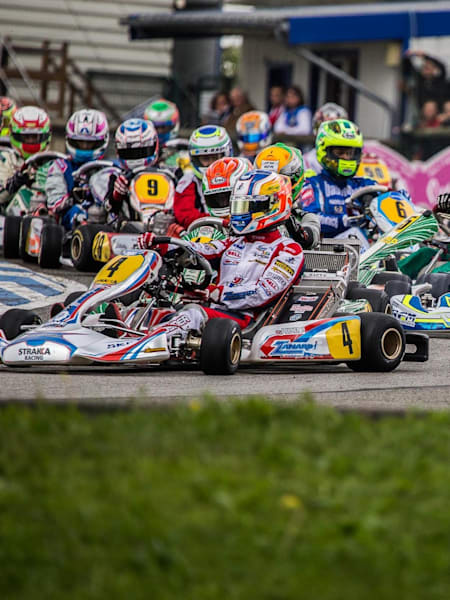Whether you’re buying a kart to get into racing, or you’re an experienced arrive-and-drive racer looking to go quicker, buying your first kart is an exciting decision – but a big one!
Much like buying a first car, you want to make sure you get something you’ll enjoy, but also something that will last and hopefully be quick. Here are a few tips to help you avoid disappointment – and maybe even save you some money.
1. Decide what you want to do with your kart
Deciding what you want from your kart is one of the most important things you can do, even before searching. Some people will want a kart that gives them a buzz on occasional test days at their local circuit. For others, this might be that start of a successful karting career and they will want a kart that’s capable of racing at the front. For the latter, it’ll be worth spending a bit more to save you from further outlay in the future.
2. Research which classes are popular in your area
There are quite a few different classes in karting – the chassis are the same but fitted with different engines – and certain classes are more popular in some areas than others. If you are planning to race your kart, then you should look at which classes have good grids at your local clubs.
3. Buy a reputable chassis make
There are several chassis manufacturers that have been making good chassis for decades and have refined the art. We recommend buying a chassis from a manufacturer that’s recently been represented at either British or World Championship level. New or old, a chassis from one of these brands in good condition will be suitable for all karters. Karts from the following makes are a good start, although there are other good chassis out there:
- Tonykart
- Kosmic
- Exsprit
- FA
- CompKart
- CRG
- Fullerton
- BirelART
- Sodi
- MS
- RK
- OK
- Intrepid
- Praga
- Mach1
4. See the kart in person before purchasing
As with a lot of things, it’s best to see what you are about to spend your money on in person. When you see the chassis, there are a few areas to look for cracks and wear. The underneath of the chassis at the front and at the ‘waist’ (below the fuel tank) should not be worn flat; a pre-owned chassis will always be scuffed here, but a kart with excessive wear here should be avoided.
Check the chassis all around the engine mounts at the right rear – they often crack just behind the engine and at the bearing carrier. If it’s been welded, check that the weld is neat and done professionally. Same goes for the seat stays where they meet the chassis frames. If possible, ask to have it jigged to check it’s not bent before you buy it.
5. Use online auction sites with caution
Online auction sites such as eBay and Gumtree often have karts for sale, but there are a lot of sub-standard, poorly maintained karts out there. The best karts will be found on specialist sites like UK Karting, where the majority will be sold by more knowledgeable and experienced people than you’ll find on an auction site. Not only will the karts be race-ready, but the seller will probably be able to point you in the right direction with setup or any quirks that the kart has.
Buying a kart is a big commitment: they require maintenance and have quite a few consumables such as chains, sprockets, fuel etc. which all have a cost. But karting is one of the most exhilarating activities around, and running your own kart is hugely rewarding and well worth the effort. The karting community is helpful, and if you have any questions, your local club will be glad to help you out.
See you on the track.





